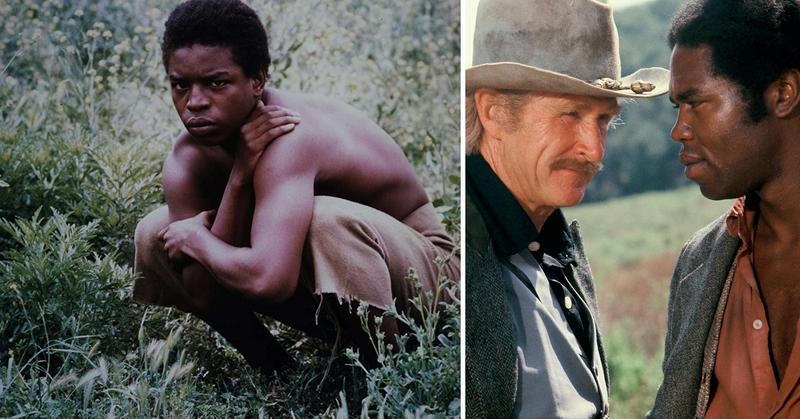'Roots:' The Show About Race That United American Viewers
By | June 27, 2019

Today's TV phenomena -- like The Sopranos or the recently-ended Game Of Thrones -- inspire passionate fans, but they pale in comparison to the 1977 miniseries Roots. Based on Alex Haley's Pulitzer Prize-winning historical novel, Roots captivated the country when it aired over eight consecutive nights, with its final episode reaching over half the TV viewing public. It was a historical drama, with a star-studded cast that included LeVar Burton, Ben Vereen, John Amos, Louis Gossett Jr., and Leslie Uggams -- and it also made TV history of its own.
In the 1970s, the miniseries thrived as the original sort of binge-watching experience. The stories unfolded slowly, allowing viewers to get more involved in the plotline and the characters’ lives. They had a distinct story arc, and, since this was the time DVR, people needed to make sure that they tuned in on the night of the broadcast, or risk being excluded.
Roots aired from January 23-30, 1977, despite ABC’s initial apprehension about the show. It was an unexpected phenomenon, being watched by an estimated 130 million viewers, which was more than half the U.S. population. The only scripted TV broadcast that has ever surpassed the Roots finale was the final episode of MASH (a finale that was 11 years in the making), in 1983.
Could a show about what we now call "black history" unite Americans of all races around their TV sets today? Who knows -- in these fragmented times, it seems hard to find anything that unites us, and there are infinitely more viewing options. But with just three networks to choose from and perfect execution, Roots prevailed in 1977.
Tracing The Beginnings Of A Family

The story begins with the abduction of Alex Haley's ancestor Kunta Kinte (LeVar Burton) from Gambia, tracing his travels to Annapolis Maryland, where he is sold into slavery. The story continues to trace the family throughout the 18th century (with John Amos taking over the role of Kunta Kinte) and into the post-Civil War era. The mini-series ends with Chicken George (Ben Vereen), one of Kunta Kinte’s descendants, recounting the story once they arrived in their new home in Tennessee. This was followed by a montage of photographs of Alex Haley’s family accompanied by a voice-over by Haley himself.
The miniseries ended earlier than the book, which went on to portray three additional generations.
Finding An Audience

Because of their concerns that white Americans would not tune into the show, or that Southern affiliates would not even air it, ABC planned it for eight consecutive nights. Moreover, producers cast Ed Asner as Thomas Davies, a character who was not included in the novel. Asner’s character was a conscience-stricken slave boat captain, and his sympathetic portrayal may have made the depiction of slavery more palatable.
Asner, a beloved TV actor from The Mary Tyler Moore Show, was just one familiar face that drew in viewers. TV mainstays Lorne Greene (Bonanza), John Amos (Good Times), Chuck Connors (The Rifleman), and Lloyd Bridges (Sea Hunt) raised the show's profile above that of most miniseries. Add in multi-faceted veteran performers like Ben Vereen and Sandy Duncan; poet Maya Angelou; and even football player OJ Simpson (who was then a well-liked celebrity), and Roots was really a must-watch spectacle before its first episode had even aired.
The show appealed to black and white audiences alike, a tricky balance for a show about America's unpleasant history with regard to race.
However, there were critics of the way that race was portrayed in the miniseries. Ronald Reagan criticized it for characterizing the black characters as all good, while the whites were bad. The white characters were occasionally conflicted and did sometimes try to do good, though the results of their actions may not have been good.
The Miniseries Had A Broader Audience Than Anticipated

So what led to Roots’ widespread appeal? Perhaps it was the content. It did show significant sexual and racial violence which may have captivated the audience. Perhaps it was the story and the characters. It was a family saga, portraying characters whom viewers could connect to and care about. Perhaps it was the unexpected success of running every episode consecutively. Or, perhaps it was the inclusion of universal themes. These were familiar to Americans and included courage, honor, and family. It also appealed to the widespread belief in the American Dream, that success was attainable. This was implied by one of the concluding images of the miniseries, the image of pioneers heading West into the frontier to start new lives. White viewers could relate to these themes and ideals.
The Legacy

While the novel won the Pulitzer Prize and the miniseries was nominated for 37 Prime Time Emmy Awards and won nine, it was not without controversy. It has been criticized for not being historically accurate. Still, it remains one of the highest rated television miniseries of all time and was followed by a sequel in 1979, Roots: The Next Generations and has been recently remade by A&E.
